Carl Zimmer's Blog, page 80
October 18, 2010
Announcements, Announcements cont.: I'm hosting four great science writers at Yale on 11/5
Next month, the National Association of Science Writers is descending on New Haven for their annual meeting. I didn't want this talent pool to flow into and out of the Elm City without sharing some of it with the community. So I've organized a public reading with four authors–two coming to town for NASW, and two area residents. All four writers have excellent new science books, and–remarkably–they are not unique in that regard. This year has been a fantastic one for science books, and I could have easily scheduled half a dozen more events with quartets of equally gifted writers.
The readings will take place at the magnificent Beinecke Rare Book Library, where you can check out the Gutenberg Bible and Audubon double elephant folios beforehand. (A note to NASW members coming to the meeting: the library is a few minutes' walk from the Omni Hotel, where the meeting is going to be held. And it will run from 4 to 6 on Friday, 11/5, ending just time for everyone to get to the evening NASW festivities.)
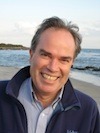 Richard Conniff: The Species Seekers: Heroes, Fools, and the Mad Pursuit of Life on Earth
Richard Conniff: The Species Seekers: Heroes, Fools, and the Mad Pursuit of Life on Earth
Richard Conniff writes about wildlife, human nature, and other subjects for magazines including Time, Smithsonian, and National Geographic. His previous books include Spineless Wonders and The Natural History of the Rich: A Field Guide. He has won a National Magazine Award and his work has been included in three editions of the Best American Science and Nature Writing.
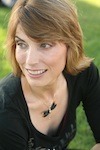 Jennifer Ouellette: The Calculus Diaries: How Math Can Help You Lose Weight, Win in Vegas, and Survive a Zombie Apocalypse
Jennifer Ouellette: The Calculus Diaries: How Math Can Help You Lose Weight, Win in Vegas, and Survive a Zombie Apocalypse
Jennifer Ouellette is the author of The Physics of the Buffyverse and Black Bodies and Quantum Cats: Tales from the Annals of Physics. She is the author of the popular "Cocktail Party Physics" blog and has served as the director of Science & Entertainment Exchange, an initiative from the National Academics of Sciences aimed at fostering collaboration between scientists and the entertainment industry.
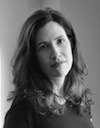 Annie Murphy Paul: Origins: How the Nine Months Before Birth Shape the Rest of Our Lives
Annie Murphy Paul: Origins: How the Nine Months Before Birth Shape the Rest of Our Lives
Annie Murphy Paul is the author of The Cult of Personality: How Personality Tests Are Leading Us to Miseducate Our Children, Mismanage Our Companies, and Misunderstand Ourselves. She is a former senior editor at Psychology Today and has written for The New York Times Magazine, Time, O: The Oprah Magazine and Slate.
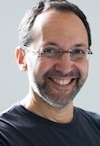 Jonathan Weiner: Long for This World: The Strange Science of Immortality
Jonathan Weiner: Long for This World: The Strange Science of Immortality
Jonathan Weiner is the author of five books, including The Beak of the Finch: A Story of Evolution in Our Time, for which he won the Pulitzer Prize. He is the Maxwell M. Geffen Professor of Medical and Scientific Journalism at Columbia University.
The details:
Great Science Writing At Yale
Beinecke Rare Book and Manuscript Library
Friday, November 5, 4-6 pm.
Free and open to the public; first come, first seated
Moderated by science writer and Yale lecturer Carl Zimmer
Sponsored by the Yale Environmental Studies Program
Map: http://bit.ly/YaleBeinecke
Feel free to download this poster (pdf) and spread the word!
October 16, 2010
Attention, New Yorkers: The Imagine Science Film Festival is upon you!
I'm a judge again this year for the Imagine Science Film Festival, a fascinating Petri dish of short movies that feed on science and produce all sorts of interesting artistic metabolites. The festival has just kicked off, and there will be movies (both short and long) all week. Here's the schedule. Having seen all the short pieces, I can say there's some excellent stuff in the mix (although I won't tell you exactly which ones I liked best till after the award ceremony on Friday).

October 14, 2010
Revenge of the whippersnappers: Ed Yong wins National Academies Communication Award
Hearty congratulations to Ed Yong, fellow Discover blogger, for winning this year's online National Academies Communication Award. I serve as a judge for the awards, so I told the NAS folks I would have to sit this particular vote out this year, seeing that a fellow member of the Discover hivemind was in the running. From the sidelines, I was very pleased to see him win. Ed's torrent of well-researched blog posts on natural history give the lie (again) that blogging isn't serious journalism.
Congratulations as well to Richard Holmes for his wonderful book, Age of Wonder, Charles Duhigg for his deep exploration of our water woes, and Carole and Richard Rifkind, co-producers and co-directors of the show, "Naturally Obsessed: The Making of a Scientist."

My essay in the Atlantic: On ebooks, writers, and the myth of solitude
Over at the Atlantic, I describe my experience creating an ebook on my own. First lesson: I don't want to be the author of a Microsoft Word file. Check it out.
My deep thanks to Alexis Madrigal, the technology editor at the Atlantic, for inviting me to contribute my thoughts.
My new book–ebook, that is: Brain Cuttings
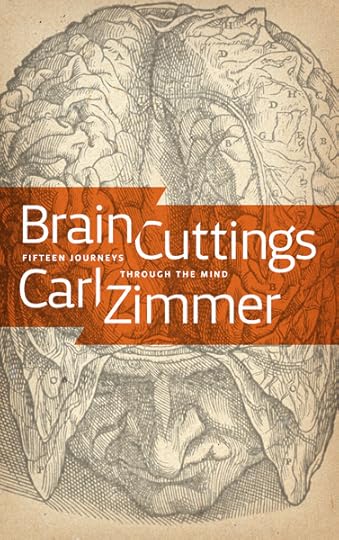 I'd like to introduce you to my latest book. It's called Brain Cuttings: Fifteen Journeys Through The Mind. (Amazon / BN) It's my ninth book, but it's my first dip into a new kind of publishing. And it was spurred on by you, dear reader.
I'd like to introduce you to my latest book. It's called Brain Cuttings: Fifteen Journeys Through The Mind. (Amazon / BN) It's my ninth book, but it's my first dip into a new kind of publishing. And it was spurred on by you, dear reader.
Last year I put a survey on the Loom to find out about your reading habits—current and future. The 761 responses I got were surprising in a lot of ways, and they guided my thinking about what sort of new kinds of formats I could explore. I've been especially curious about how books can become blogified: in other words, writers can think up ideas for books, create them, and then quickly offer them up for sale at places like Amazon, regardless of whether they fit into the well-worn grooves of traditional publishing.
As a first foray, I decided to gather my favorite recent pieces on the brain. Some readers may have come across one or two of my published pieces over the past couple years, but I wanted to offer them a bunch of them—fifteen to be exact—in one place. Collections have always thrived on this convenience. If you're a fan of Joseph Mitchell, for example, you could track down all of his pieces in individual issues of the New Yorker. Or you could just buy
October 13, 2010
Reminder: Tomorrow I'll be talking in DC, live and live-streamed
Tomorrow I'll be speaking in Washington DC at the Koshland Science Museum about communicating science in new media. It's going to be a retro-future kind of talk. For one thing, I think Vesalius was a great model for thinking about science in new media. He had a lot of things figured out 450 years ago that we're just rediscovering.
Plus the semi-super-secret project I mentioned last week. I'll explain that tomorrow morning.
You can join me at the museum for free, but you have to make a reservation in advance by calling 202-334-1201 or emailing ksm@nas.edu. Or you can watch the livestream here, thanks to the folks at the American Society for Microbiology, which collaborates with the Koshland Museum. You can even ask questions via Twitter if you tweet them to @microbeworld or use the hashtag #koshland. We'll be having a long Q & A session, and someone will be reading the questions from Twitter.
Here are the details:
Date: Thursday, October 14, 2010
Location: Koshland Science Museum
Time: 6:45 PM to 8:00 PM
6:45 – 7:15 Talk
7:15 – 8:00 Discussion
Museum Location: Located at the corner of 6th and E Streets, NW in downtown Washington, DC.

October 11, 2010
Monkey self-recognition? Not so fast!
Last week I posted a story about an experiment suggesting monkeys can recognize themselves in the mirror. One of the experts I contacted was Peter G. Roma, who was the lead author of a 2007 paper that failed to find evidence for this kind of self-recognition. Roma responded today with an interesting response, which I'm posting here, and at the end of the original post...
Although the video samples are provocative, I cannot agree with the conclusion (and title) of the paper.
The lack of social behaviors towards the mirror is irrelevant because the monkeys all had an extensive history with mirrors prior to the study, so there was no reason to expect social responses after years of habituation to reflective surfaces. To anthropomorphize, they may still think the monkey in the mirror is another animal, but over the years they've learned that he's harmless.
The examples of putative genital viewing were not convincing either. The authors repeatedly asserted that the monkeys used the mirrors to view areas they could not see directly, but monkeys can see their genitals unaided, and they play with them all the time with or without mirrors! Even the video samples show the monkeys looking at their genitals directly then viewing the same area(s) in the mirror. This is why scientists do the mark test!
In my view, the most compelling evidence was the first video of the monkey touching the head implant while holding the mirror. There is no doubt that the monkeys could not see the implant without a reflective surface, but the key here is whether or not this self-examination behavior occurred more frequently in the presence of the mirror vs. without. The authors report increased incidence of touching "unseen" areas in the presence of the mirror (figure 2C), but these data include touching the cranial implant and the genitals. I suspect these data are artificially inflated by what the authors perceive as mirror-guided genital examination, which even in the video examples did not appear to be anything more than typical stereotyped "acrobatic" behaviors often seen in individually-housed rhesus monkeys. The authors provide no data on the frequency of just cranial implant touching with vs. without mirrors, and no visual evidence except for the single incident from the video. Why wouldn't they report the number of implant explorations independently of the genital viewing?
My primary concern is that all monkeys failed the mark test, and the strongest apparent evidence of mirror self-recognition (MSR) was only seen in two monkeys following cranial surgery–a manipulation with strong tactile cues that could elicit exploration regardless of the mirror's presence. Their argument rests largely on the assertion that the cranial implant is a "super mark" that somehow awakened a latent ability in the monkeys to self-recognize, but it's unclear why the implant would be more visually salient than a brightly contrasting color marking on the face. The more parsimonious conclusion is that the tactile sensation of the implant was enough to elicit exploration, but even then, the authors provide no evidence that implant exploration occurred more frequently in the presence of the mirror vs. without.
If the authors' hypothesis is true that a cranial implant serves as a "super mark," then their procedures warrant replication, which frankly they should have done before making such a bold assertion. Currently within the Order Primates, the overwhelming preponderance of evidence still limits MSR and the fundamental cognitive precursor to a "sense of self" to the apes.

October 8, 2010
All in the Mind goes all parasitic
I'm a big fan of All in the Mind, a radio program on neuroscience, psychology, and all things brain-ish, produced by Natasha Mitchell for Australia's ABC Radio National. So it's a double pleasure to hear her new episode about how parasites alter behavior. Check it out.

October 7, 2010
Announcements, announcements, cont'd: Join me in DC, live or online, 10/14
Next Thursday I'll be speaking in Washington DC at the Koshland Science Museum about communicating science in new media. I'll talk about some of the usual suspects–blogging, podcasts, the dreaded Twitter–but I've also got a new project to share. (I'll blog the details about this semi-super-secret project in the next couple days.)
You can join me at the museum for free, but you have to make a reservation in advance by calling 202-334-1201 or emailing ksm@nas.edu. Or you can watch the livestream here, thanks to the folks at the American Society for Microbiology, which collaborates with the Koshland Museum. You can even ask questions via Twitter if you tweet them to @microbeworld or use the hashtag #koshland. We'll be having a long Q & A session, and someone will be reading the questions from Twitter.
Here are the details:
Date: Thursday, October 14, 2010
Location: Koshland Science Museum
Time: 6:45 PM to 8:00 PM
6:45 – 7:15 Talk
7:15 – 8:00 Discussion
Museum Location: Located at the corner of 6th and E Streets, NW in downtown Washington, DC.

October 6, 2010
New podcast: I for one welcome our digital overlords
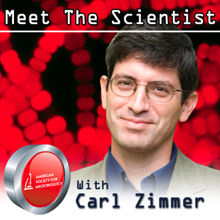 On my latest podcast, I talk to Charles Ofria, a computer scientist who helped build Avida, one of the most intriguing examples of artificial life around. I wrote about Avida when it first hit the news back in 2005 in this cover story for Discover. Five years on, I caught up with Ofria for the podcast. I learned that the Avidians are evolving to be cleverer and cleverer–clever enough, in fact, to control robots. When they show up in my town, I plan on waving the magazine cover so they'll spare me. Check it out.
On my latest podcast, I talk to Charles Ofria, a computer scientist who helped build Avida, one of the most intriguing examples of artificial life around. I wrote about Avida when it first hit the news back in 2005 in this cover story for Discover. Five years on, I caught up with Ofria for the podcast. I learned that the Avidians are evolving to be cleverer and cleverer–clever enough, in fact, to control robots. When they show up in my town, I plan on waving the magazine cover so they'll spare me. Check it out.


















